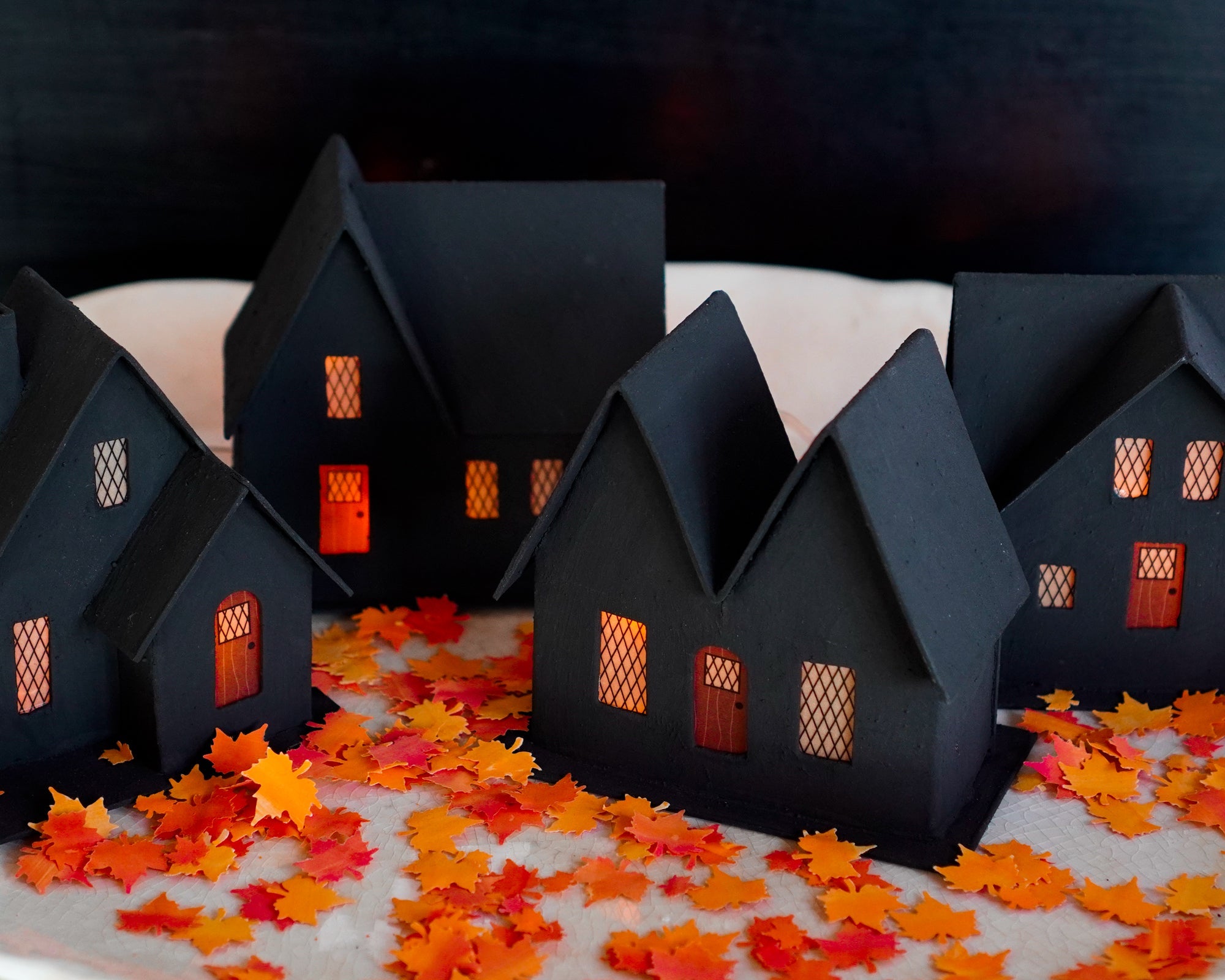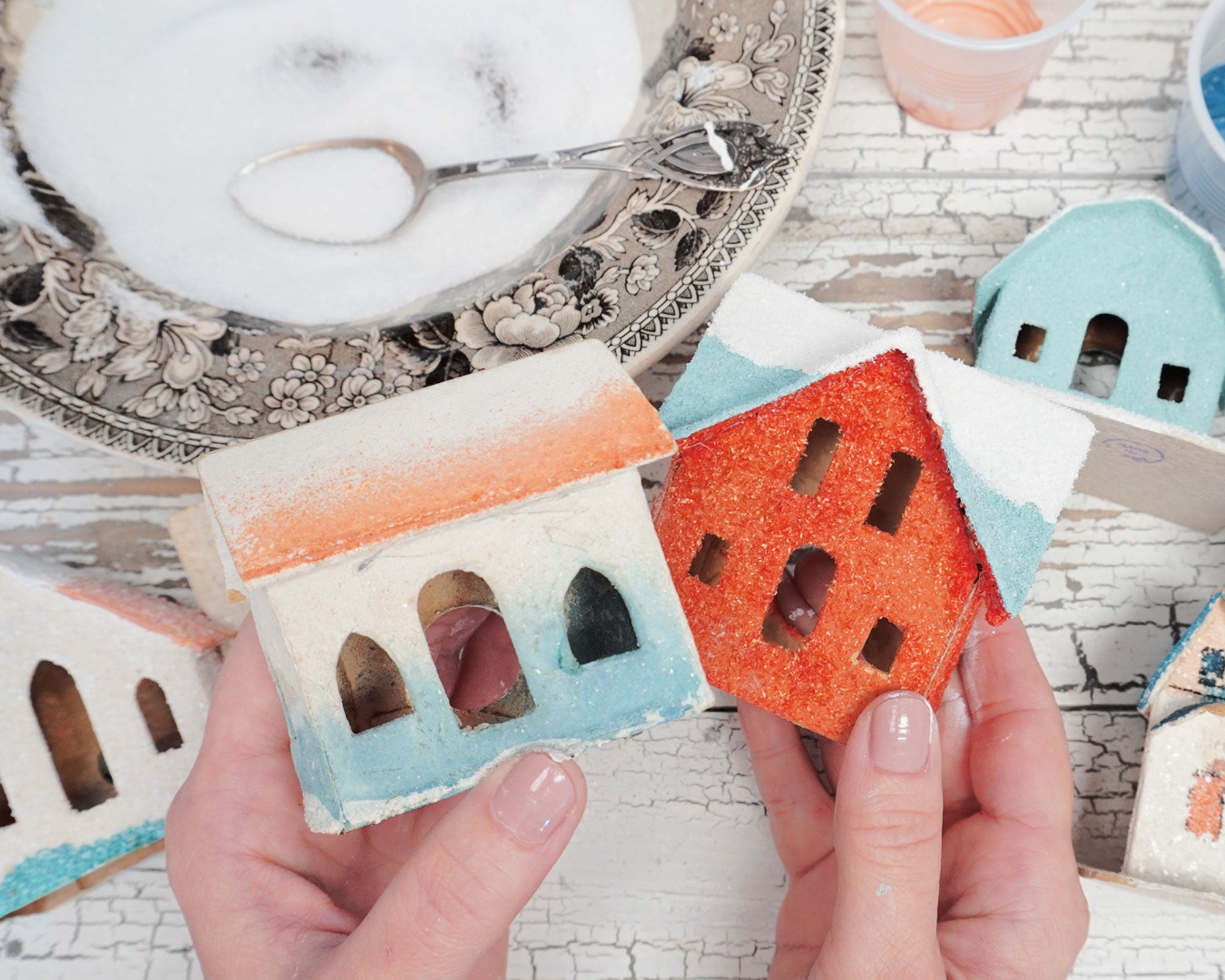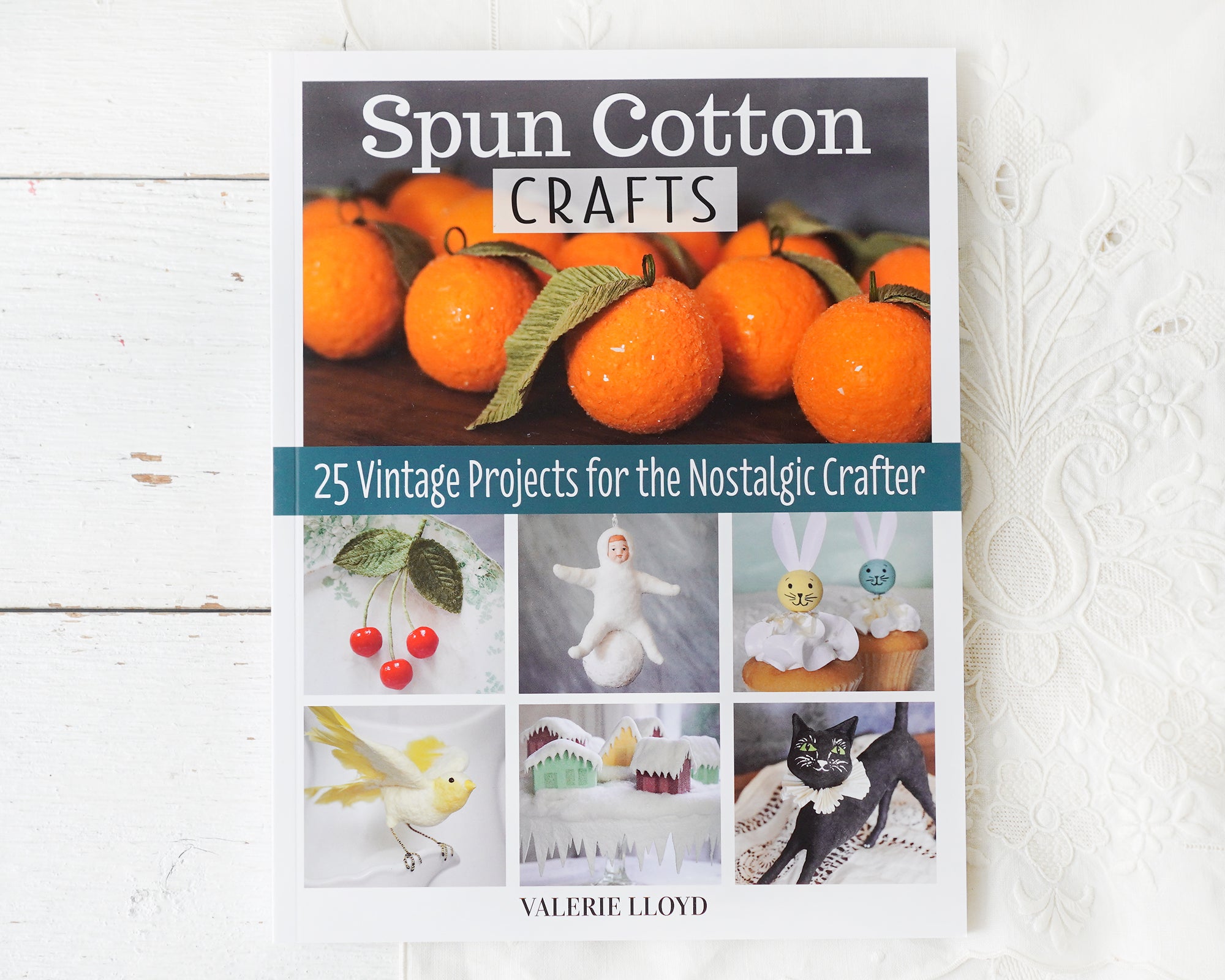How to Make a Feather Tree

Feather trees were a late-19th century German invention- a creative alternative to wasteful, messy, and exceedingly flammable real Christmas trees from the forest. They were most popular in the years leading up to World War I which interrupted the manufacture of handmade German trees.
Creating a small tabletop tree is an exciting project. It's the opportunity to craft a personal heirloom, and is a practical display for handmade and antique ornaments. It may seem a little intimidating at first, but there is a straightforward set of steps, and a 'recipe' for laying out branches that makes it doable. There are several techniques for crafting branches, and the one I'm using today I find to be simple and easy to replicate branch after branch.
The feathers used are goose biots, which are goose wing feathers that have been split down the spine, so that it is just a partial feather. By wrapping the spine around a floral wire, the feather quills splay out to create the illusion of pine needles.
The tree I'm building today is 16 inches tall with 22 branches. It is a small tree, with simple materials used, and is a great introduction to the technique. Once you have created a small tree like this, you can scale-up the design to try a larger tree. If you are creating a tree taller than about two feet you'll want to use a thicker wire (16 gauge or up,) and you may want to add a wooden dowel to the trunk for additional support. Mini trees like the one in this tutorial do fine with 18 gauge wire for the branches and trunk.
Wire gauges and quality can vary by manufacturer. You want a good, stiff wire, and I will link the exact wire I am using below. Paper-wrapped wire is ideal as the glue will stick well to the paper.
As an affiliate I may earn commission from qualifying purchases at no cost to you. I offer these tutorials for free, and your clicks support my work, thank you!
Supplies:
- Goose biots, approx. 55 feathers roughly 5-8 inches long, available in Spruce Green, Kelly Green, and Soft Pink
- Small holly berry stems, or other berry stems such as: Mini Size Holly Berries, Medium Size Holly Berries, Pearl Stems, Spun Cotton Berries, or Sugared Berries
- 14" 18 gauge paper wrapped wires (green or brown) 22 Pcs
- Masking tape
- Floral tape
- Craft clips, binder clips, or clothespins
- Ruler
- Strong glue like Turbo Tacky Glue
- Wooden toy wheels in 2" and 2 1/2" diameters (see video for additional info on feather tree bases)
- Metallic brown crepe paper
- Scissors
- Paint, paintbrush
Wrapping technique:
First, attach a berry to the end of each floral wire. The berries come on stems that you can cut short, to about 1 inch. Attach the berry stem to the wire with a small piece of masking tape. The berries hide the ends of the wires, and help keep the feathers from sliding off the ends.
Apply glue around the end of the wire, just under the berry. To start wrapping a feather, hold the pointed end of the feather against the wire with the point facing you, and the rest of the feather extending beyond the berry. While holding the point against the wire with your dominant hand, start wrapping the feather around the wire with the other hand. Wrap the feather over the point to secure it. Once you have it started, you can turn the wire while holding the feather taut to continue the wrap. When you reach the end, grasp the feather and wire with your non-dominant hand, and apply glue to the inside of the feather's spine, then wrap it a couple times, and clip the end of the feather against the wire to hold it while it dries. Allow the feather to dry before adding the next feather to the branch.




To add feathers to a branch:
Remove the clip after the last feather has dried onto the wire. Snip the remaining feather end to about 1/4 inch. Select your next feather. Optionally, you may snip off the tapered point of the feather to help keep the 'pine needle' length even along your branches. Apply glue just under the wrapped feather, and when you begin wrapping the next feather, wrap over the short 1/4 inch tail. To achieve branches of specific lengths, you will wrap some feathers just part-way before gluing and clipping them. The remaining bits of feather can be snipped off after they have dried.
When you have finished a branch, wrap the last feather's tail against the wire with a little bit of floral tape.

Branch construction:
When you are making multiple branches of the same length, compare them to one another to ensure they are all the same. Because there is natural variance in the feathers, some branches will use more feathers than others and the number of feathers may not be the same per branch. Use the wrapping technique to create feather branches in the following lengths, and leave the rest of the wires bare for the trunk:
1 branch: 3 inches long
3 branches: 2 inches long
5 branches: 2.5 inches long
6 branches: 3.5 inches long
7 branches: 4 inches long

At the completion of the branches, snip off any remaining feather tails, and wrap the ends against the wire with floral tape. Then, use a ruler to bend all of the branches (except the top 3-inch branch) at a 90 degree angle, just under the last feather added.
Tree construction:
Build the tree from the top down:
Start with the 3-inch upright branch at the center, and arrange the three 2-inch branches around it. Apply a small strip of masking tape to hold them in place, and then wrap floral tape over the masking tape. The spacing between branch is 2 1/4 inches for this tree, so wrap the floral tape down the trunk to that length.
Under the 2 1/4" taped section, arrange the next tier of branches, the five 2.5-inch. Again, wrap with masking tape, then 2 1/4 inches of floral tape.
Continue with the next two tiers.
Under the last tier with the sever 4-inch branches, decide how tall you want your lower trunk to be. In this model, I have a five-inch trunk between my lower tier and the base. Snip off any excess wire, and wrap with floral tape to secure the ends.
Select a base:
You may build up the trunk with floral tape to your preferred thickness. If you like a thicker trunk, you might consider adding wrappings of kraft paper to build it up. Keep in mind that you will need to find a base with a larger hole for thicker trunks than what I am demonstrating here.
The base used here is made of two wooden toy wheels, 2 and 2 1/4 inches diameter, which I have stacked, glued together, and painted. They come with a 3/8" hole at the center, so I have kept that in mind with my wrappings to ensure they will fit. Thicker trunks may need a base with a hole custom drilled to fit.
Decorate the trunk:
The floral tape will remain perpetually sticky, so it should be covered. Cut 1/2 inch off of the end of a brown crepe paper fold to make a long crepe paper ribbon. Apply it with a dot of glue under each tier of the tree and wrap two layers thick.
Attach the base:
Set the base on a piece of wax paper. Apply glue to the hole in the base, and spread evenly with a toothpick. Gently insert the tree trunk, and allow to dry.
Scaling:
If you are building a larger tree, use thicker wires, and secure the branches to a wooden dowel with wrappings of a fine wire under the floral tape for added sturdiness.

Featured Products:
Goose Biots, Kelly Green, 75 Pcs.













